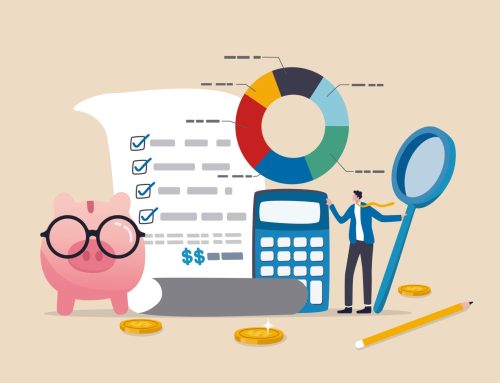
Build Your Diversified Income Plan
Having a strategy to generate income you can’t outlive can give you peace of mind. To help defend your future against inflation, market ups and downs, unexpected expenses, and longevity, I encourage you to build a diversified income plan.
Funding your retirement can be accomplished in many ways. Social Security benefits, pensions, dividends, interest, appreciation, insurance, and inheritance are some examples many people are familiar with. To help build your diversified income plan, here are a few factors to consider along with some building blocks that could help create a sturdy foundation.
Key Considerations
1. A long retirement
Several studies, including The Stanford Center on Longevity, show the average life expectancy age has steadily increased at a rate of about 3 months per year. In addition, longevity expectations may continue to increase.
This means you may need plan for 30 years (or more) of retirement income. The average Social Security benefit is $1,461 a month in 20191. If you can’t live comfortably on this amount, you should identify additional means of retirement income.
2. Inflation
Inflation has been low recently. However, its impact can be significant over 20 or 30 years. For example, using a 2% inflation rate, in 25 years, you need $82,030 to purchase something that costs $50,000 today.
3. Market volatility
While you don’t want declines during retirement, you may still need stocks for the possibility of growth. If you get nervous seeing your balance move up and down, you may want to reevaluate your investment mix.
You still need to be wary of being too conservative, especially if retirement is several years away. More conservative strategies don’t usually provide the growth potential you may need. Also remember it may be easier to stick with your plan if expectations are realistic.
It doesn’t matter whether your strategy is conservative or aggressive. Your balances will probably fluctuate over time. However, they will fluctuate differently depending on market conditions.
The sample target investment mixes below show illustrative blends of stocks, bonds, and short-term investments. It also identifies different levels of risk and growth potential. With retirement likely to span 30 years or so, you’ll want to find a balance between risk and growth potential.

4. Withdrawing the right amount from savings
I’ve never met someone who really knows what the future holds. However, I usually suggest someone with a balanced portfolio, who plans on a 30-year retirement, limits withdrawals to 4% to 5%.
Using the hypothetical chart below, let’s assume you retire in 1972 at age 65 with a balanced portfolio. You have 50% in stocks, 40% in bonds, and 10% in short-term investments. Limiting withdrawals to 4% annually results in enough money to last throughout retirement.
Conversely, using the same scenario, but withdrawing 8% annually, you run out of money shortly after age 75.

The sequence of good and bad performance years may also effect your portfolio’s ability to sustain your income. Specifically, a portfolio that begins strong and losses later during retirement will likely be in better shape than one with losses early on. This is even true when strong performance in later years brings the average return back in line with historical averages.
Because of this, you can see why it’s important take consider the possible effects of fluctuating financial markets when deciding how much to withdraw early in retirement. You should also balance this with your ability to stay invested during these periods of volatility, and how to divide your retirement portfolio among asset types and diverse investments.
Now you know what to consider when building your diversified income plan. Now it’s time to look at some elements of a sound plan.
3 key building blocks
Your diversified income plan should provide 3 things:
- Planned income sources to help a retirement plan succeed
- Growth potential to meet long-term needs
- Flexibility to refine a plan over time
1. Planned income for essential expenses to help a retirement plan succeed
Focus on nonnegotiable expenses, such as housing, food, utilities, and health care first. Make every effort to ensure they’re by guaranteed income sources that last your lifetime. There are essentially 3 sources of guaranteed income.
Social Security
For many people, this source is the foundation for retirement income. You may claim benefits at the age of 62. However, taking benefits at your full retirement age (FRA) or later generally translates to a higher monthly benefit.
Pensions
According to the US Department of Labor, only 14% of workers have a defined benefit pension plan.2 If you’re one of those people, I recommend weighing the pros and cons of withdrawing that money as a lump sum or stream of income.
Annuities **
An annuity is a contract between you and an insurance company in which the company promises to make periodic payments to you, starting immediately or at some future time. You buy an annuity either with a single payment or a series of payments called premiums.
Some annuity contracts provide a way to save for retirement. Others can turn your savings into a stream of retirement income. Still others do both. If you use an annuity as a savings vehicle and the insurance company delays your pay-out to the future, you have a deferred annuity. If you use the annuity to create a source of retirement income and your payments start right away, you have an immediate annuity.
The two most common types of annuities are fixed and variable. There is also a hybrid called an indexed annuity, also referred to as an equity-indexed annuity or a fixed-index annuity. Variable annuities are securities and under FINRA’s jurisdiction.
Annuities are often products investors consider when they plan for retirement—so it pays to understand them. They also are often marketed as tax-deferred savings products. Annuities come with a variety of fees and expenses, such as surrender charges, mortality and expense risk charges and administrative fees. Annuities also can have high commissions, reaching seven percent or more.
2. Growth potential to meet long-term needs
As you build your income plan, it’s important to consider including some investments that have growth potential because they may help you keep up with inflation over time.
You’ll want to think about how you will pay for the fun things also known as discretionary expenses. This includes vacations, hobbies, and other nice-to-haves.
Often these expenses are paid for out of your investment portfolio. Afterall, you can cut back on these expenses if the market performs poorly.
There are many different types of annuities that can provide a source of income to help support your retirement needs. Seek the advice of an insurance professional about your specific circumstances.*
You should also consider a mix of stocks, bonds, and cash. But being too conservative can cause you to miss potential growth. But being too aggressive can cause you to take on undue risk during volatile markets. Therefore, you want to consider a portfolio with a comfortable mix.
To create and manage your portfolio during requirement requires discipline. You sometimes need to stick to your plan even during volatile markets. You also need to research investment options and choose ones that you’re comfortable with and that match your goals. And don’t forget to monitor your investments and rebalance when needed. Finally, don’t forget about managing taxes on those investments.
3. Flexibility to refine a plan over time
A few years into retirement, your parents and/or adult child might move in, you may receive an inheritance, or some other life event may occur. Your income plan should have the flexibility to respond to these types of changes.
That’s why it’s important to combine income from multiple sources to build your diversified income stream in retirement. Sources of income can work together to help reduce the effects of some risks, such as inflation, longevity, and market volatility. For example, withdrawing from your investment portfolio doesn’t guarantee income for life. However, it does give you the flexibility to change the amount you withdraw each month.
Conversely, some fixed income annuities can provide guaranteed income for life. Unfortunately, they might not offer as much flexibility or growth potential. Setting some money aside in case of an emergency, or to leave an inheritance for your heirs, can be accomplished separately from, or in conjunction with your diversified income plan.
Making a decision
There isn’t one income strategy that works for everybody every time. Because your situation is unique, you need to decide the importance of growth potential, guarantees, and flexibility. Knowing your priorities will help develop the strategy that’s best for you.

Build Your Diversified Income Plan
To build your diversified income, here are 5 steps to help you get started.
- Identify your personal and financial goals.
- Build your diversified income plan for retirement.
- Determine when to take Social Security; how much to allocate to an emergency fund, protection, and growth potential; and who manages your investment portfolio.
- Implement your plan with the right mix of income-producing investments to balance your financial needs and investment priorities in retirement.
- Set up regular reviews with Maestro Wealth Advisors or an investment professional.
—————————————————————————————
1 Never mind the Social Security increase, seniors are in trouble-here’s why, August 2019, Market Watch
2 DOL, Private-Sectors Workers Participating in an Employment-Based Retirement Plan, 1979-2011











